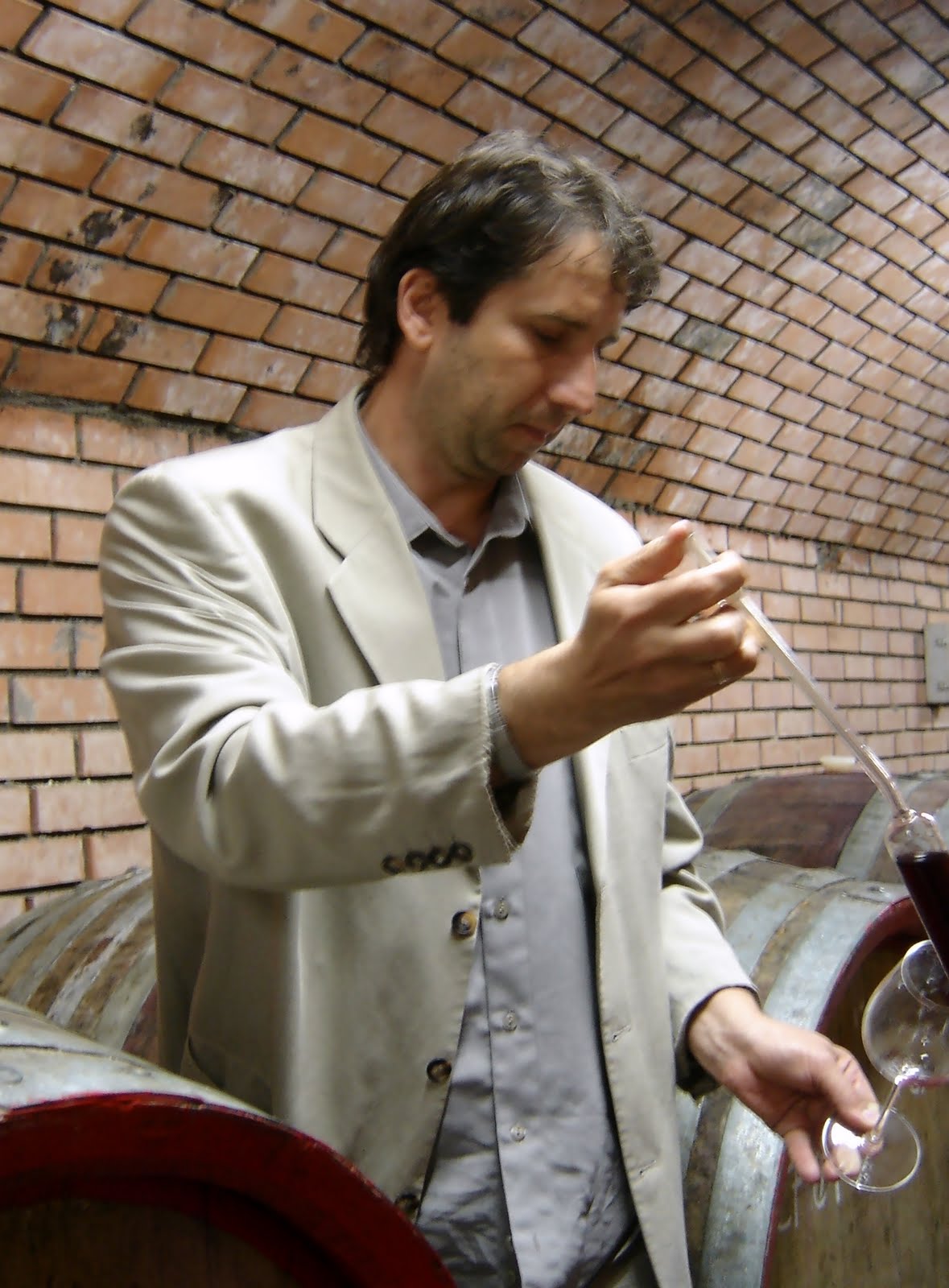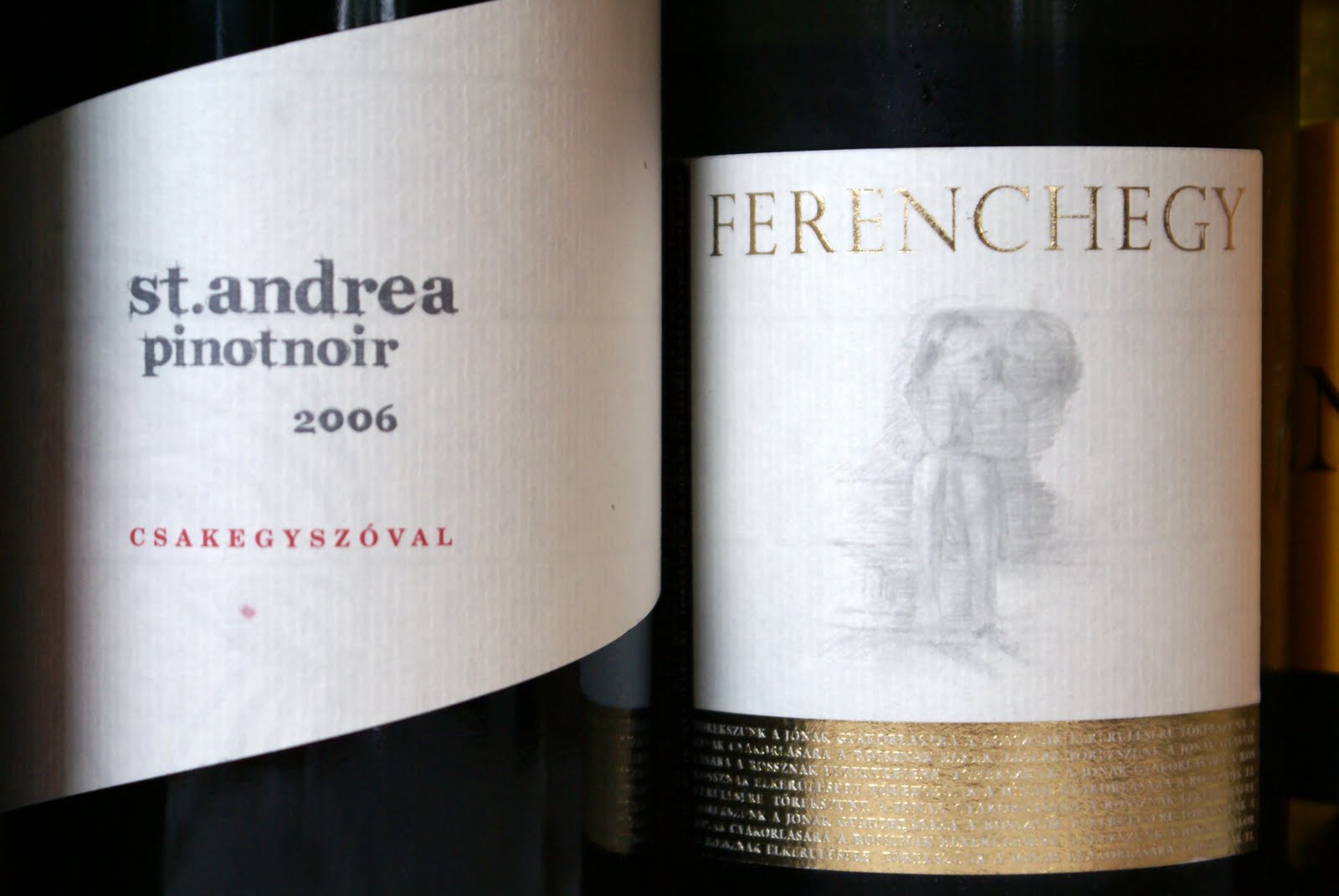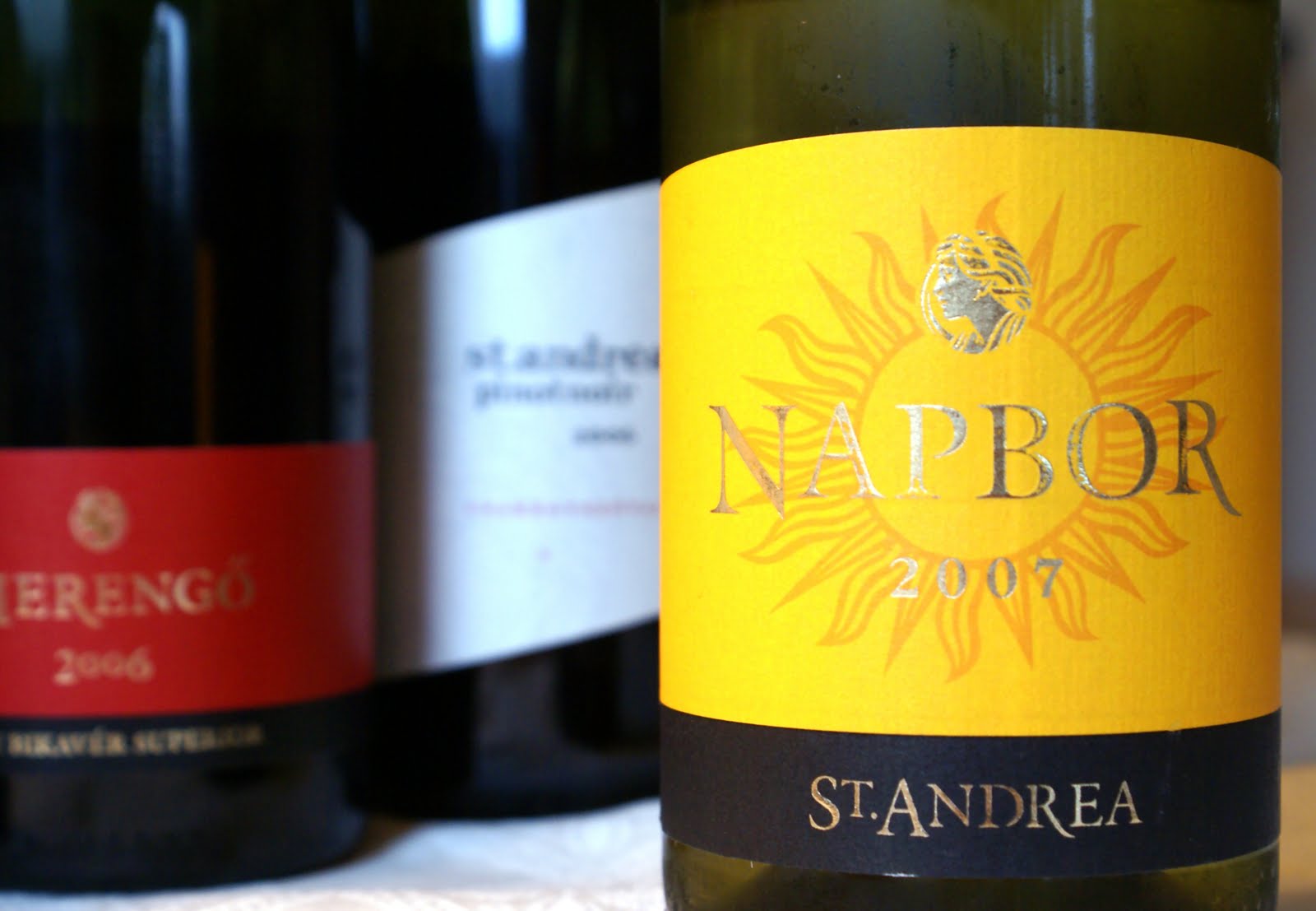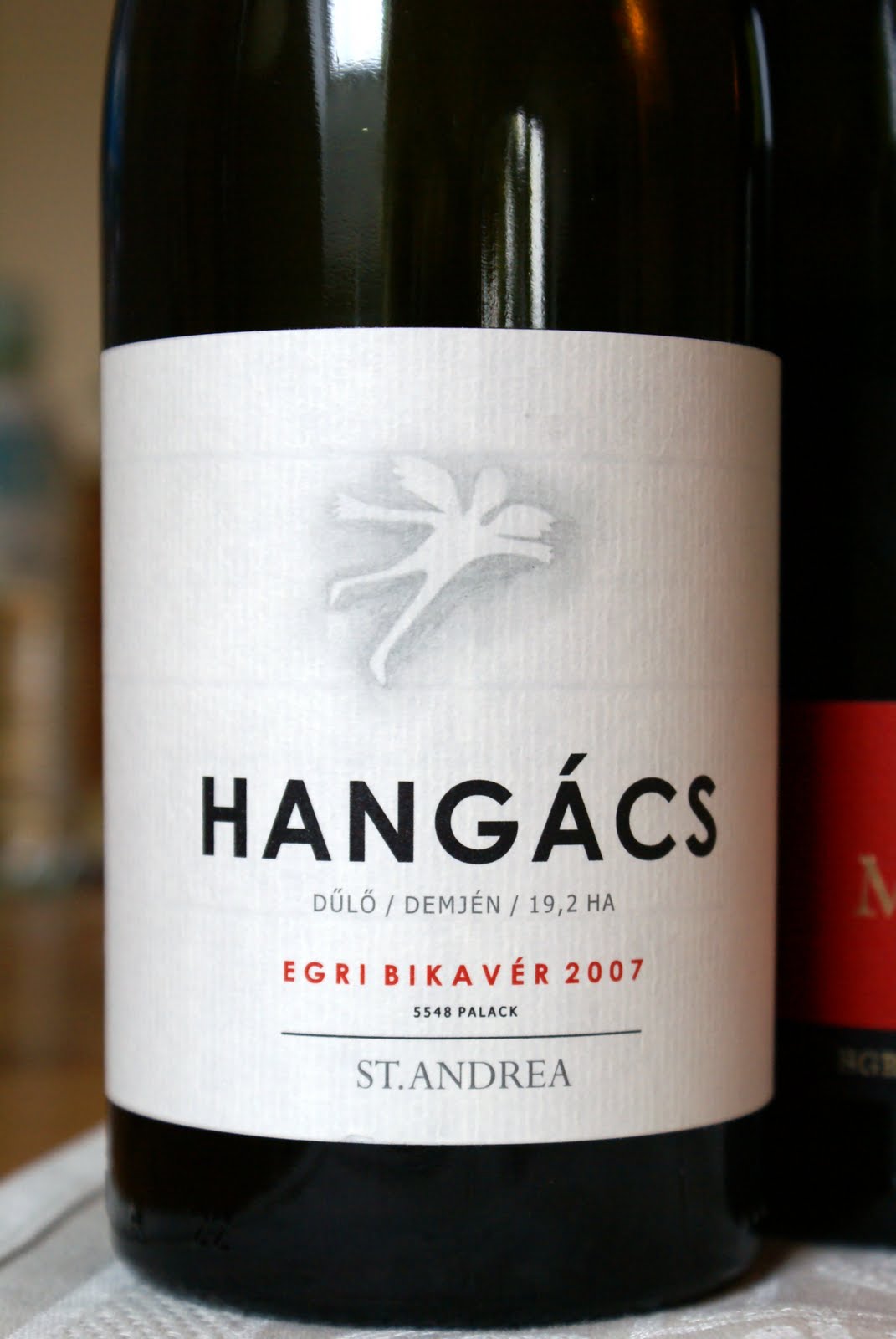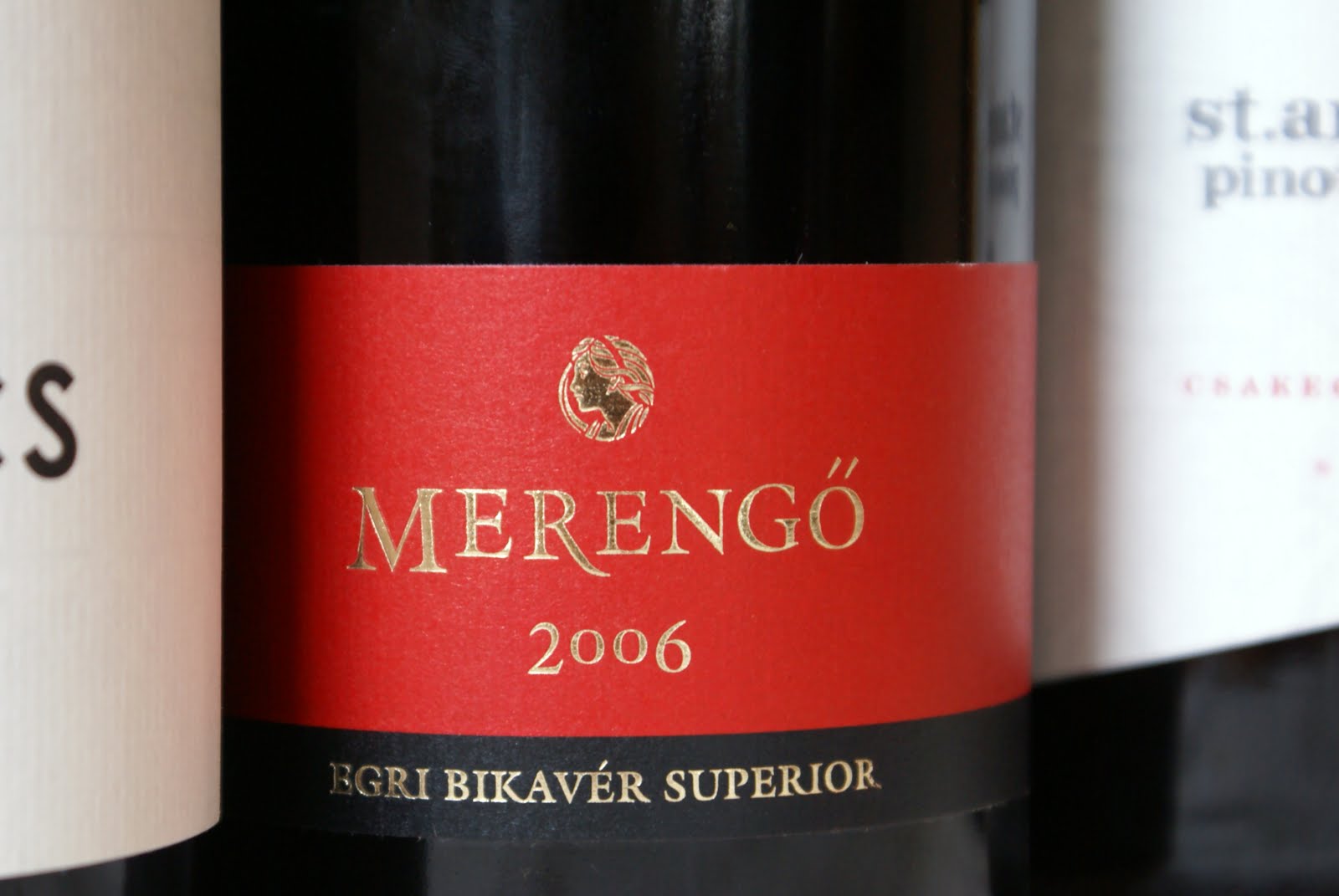The wines of St. Andrea
Posted on 9 November 2009
Hungary is an exciting wine country with great potential for all sorts of wine but it’s been a little slow in improving its red wines. While the days of overcropped oxidised ancient régime reds are gone, Hungarian vintners have contracted another disease: overextracted, overoaked international-style wines that show little in terms of terroir expression or even regional definition. (See here for an earlier discussion of this).
It’s also been the case of Eger, arguably the country’s most promising red region, where the volcanic tuff soils can yield wines that are both minerally structured and alluringly elegant. Yet the fashion has been to plant Merlot and Syrah and reach for 15% alcohol with a creamy, vanillish, soft-tannic, Chilean-lookalike mouthfeel. The recent scandal with Béla Vincze adding glycerol to entertain this style is quite telling.
Owner and winemaker György Lőrincz (photo taken June 2005).
Although of recent extraction (the first vintage here was 1999), the St. Andrea estate in Egerszalok near Eger city has quickly risen to fame – largely because it’s been able to detach itself from the above-mentioned nouveau riche tendency. Throughout the rather extensive range here the keywords have been balance, finesse, freshness and terroir character.
It was exciting, therefore, to have a look at the new releases here. Take the inexpensive 2008 Rosé: usually in Hungary it’s a way of doing away with surplus grapes rather than building a wine with full identity and justifiability. St. Andrea’s pink is ambitious and uncompromised: based on Pinot Noir it even sees a brief passage in oak. The result is a bone-dry, structured, minerally tense, ageworthy effort that however remains a real rosé, not an underextracted red. The 2007 Pinot Noir is also successful. Hungary has been looking for its own style of Pinot, combing the vegetal and earthy overtone of German Spätburgunder with a more generous Mediterranean fruitiness and, rarely, real Burgundian minerality and finesse. Here the first element dominated (a saline, almost cornichoney backbone) but there’s also quite a bit of Pinot Noir’s elusive poise and crystalline fruit.
Although not my style, I have positive feelings about the two oaked whites here: the entry-level 2008 Napbor (Chardonnay and Pinot Blanc) and the single-vineyard but reasonably priced 2007 Ferenchegy Chardonnay show good (if low-acid) fruit and balanced oak of a quality that’s still rarely encountered in Hungary (where many wines are marred by poorly seasoned and manufactured local oak barrels).
Two big reds to finish; both labelled as Egri Bikavérs (Bull’s Blood: read more about it here) although the 2007 Hangács is based on Merlot with lesser amounts of Cabernet Franc and the local Kékfrankos (a.k.a. Blaufränkisch) while the 2006 Merengő has 50% Kékfrankos and 20% Syrah. The former is a dense, earthy wine with finely integrated oak and a reassuringly continental, authentic style: it nods not to Chile but to northern Italy if anything. The fruit is perfectly ripe with no vegetal deviations but the alcohol remains a reasonable 13.5% and there is good freshness. This wine be had for 10€ retail in Hungary and if you ask me, is a seriously good bargain.
The 2006 Bikavér Superior Merengő retains broadly the same style but packs in quite a bit more concentration, and fruit is riper, taking on an almost Tuscan air. Despite its unarguable weight the wine is finely balanced, and 14% alc. must be seen as admirable self-restraint among modern Hungarian ‘icon wines’ (the equally famous Ferenc Takler’s 2006 Bartina Cuvée, tasted alongside, is 15% and more than a bit port-like in profile).
First produced in 2003, Merengő is a serious contender for the title of Hungary’s best red wine. Two years in a row when I judged at the Pannon Bormustra competition, it came an obvious 1st among 30-odd Bikavérs. This new 2006 is really a non plus ultra.


